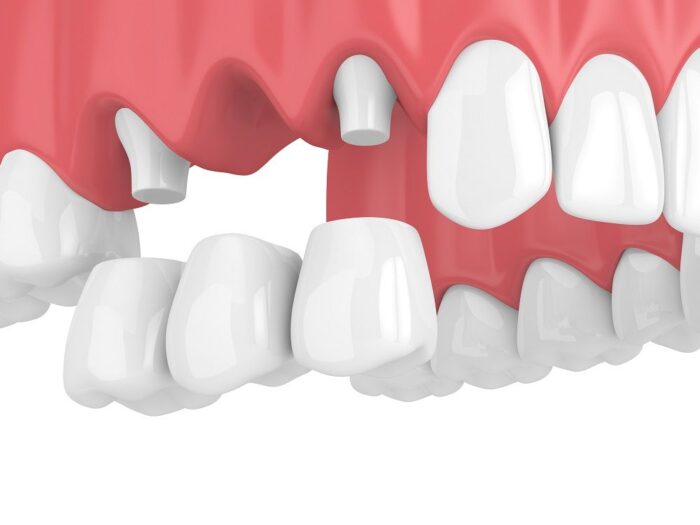If you have a missing tooth or several missing teeth, your dentist may suggest dental bridges as an option to fill the gap in your teeth. A dental bridge is a replacement for missing teeth. It is usually made of porcelain or ceramic crowns on either side of the missing tooth or teeth. Unlike partial dentures, a dental bridge is cemented into position so that it doesn’t move around and cannot be removed.
A dental bridge uses your existing teeth (or abutment teeth) as an anchor to support the bridge. A dentist can place a crown on one or more teeth to keep the bridge in place. Dentists refer to the part of the bridge that fills in the gap between your teeth as a pontic.

Are There Different Types of Bridges?
Typically, bridges consist of metal and ceramic or porcelain crowns fused together. There are a few different types of dental bridges that you can get that depend on the number of teeth you have missing and where you are missing teeth.
A traditional fixed bridge is fairly common. It uses crowns to connect the gaps in your teeth with the filler tooth or pontic.
If you only have one tooth on the side of your gap for your bridge to attach to, you may need a cantilever bridge. It only utilizes one abutment tooth to hold the bridge in place.
You can get dental bridges even if you are missing your front teeth. A Maryland dental bridge utilizes wings on the side of the bridge to prevent it from moving; the wings stabilize the bridge to your other teeth.
Dental implants can secure a dental bridge in place. This is called an implant-supported bridge, and it works in the same fashion as a traditional bridge, except it is held by implants rather than supporting teeth.
Why Use Dental Bridges?
You will have several options to choose from to fill the gap if you have missing teeth, but try not to allow too much time to pass while you make the decision or put it off too long. All of your teeth work together as a unit, so if you have a tooth or several teeth missing, your other teeth will need to work to compensate for the loss.
Over time, your teeth may naturally shift and fill the empty space. This can cause a variety of problems that may need future restorative or orthodontic work.
If your teeth move out of place, this can create a bite problem that may put you at risk of chipping or breaking your teeth. This can also prematurely wear down your teeth.
With your teeth shifted, it can put unnecessary stress on your teeth and jaw which can become painful. This may make it difficult for you to chew properly and can lead to malnutrition.
Missing teeth can cause self-esteem issues if your smile is not the way you desire it. On top of creating an aesthetic problem, teeth that have shifted drastically can cause minor speech issues. Dental bridges can stop your teeth from shifting and painlessly fill the gaps from your missing teeth.
